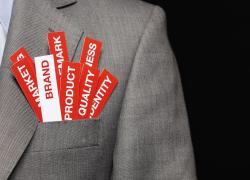It happens to the best of us: you have an awesome company, your product or service is high-quality, your social media presence is friendly and hip, and yet...sales are dipping. Engagement is down. You pump money into one seemingly promising campaign after another. You’ve tried everything - almost.
As the old saying goes, “when the going gets tough, the tough get going.”
Well, in the marketing world, “when the marketing gets tough, the tough take to marketing.” It’s time to think like a guerrilla warrior and evaluate new, unexpected methods to attack - er, attract.
The term guerrilla marketing, like guerrilla warfare, uses unusual tactics to achieve an objective...without all the bloodshed. The term was coined by Jay Conrad Levinson, the Father of Guerrilla Marketing, in 1984. Levinson defines the whole concept as “achieving conventional goals, such as profits and joy, with unconventional methods, such as investing energy instead of money.”
Let’s dissect that a bit more.
The 3 U’s that are the core of a successful guerrilla marketing strategy are:
- Unexpected
- Unconventional
- Underground*
*Though this strategy was initially intended for small, tight-budget companies to make their mark, large corporations have hopped on the bandwagon and diluted this element substantially.
Guerrilla marketing works best for small or medium businesses that are willing to take risks. The strategy focuses on activities, following the 3 U’s above, that occur in public places to reach a maximum audience. Though not the main focus, many guerrilla marketing strategies either organically or strategically transcend into the social media realm and continue to explosively gain ground if successful. Many times, guerrilla marketing tactics are not fully permitted by the establishment, such as applying a vinyl poster on a private property’s wall, and can therefore by risky.
The ultimate goal is buzz: by inciting a powerful (and positive) emotional reaction, guerrilla marketing usually leads to word-of-mouth (WOM) and sometimes viral status online. But how? There are a few approaches to succeeding, starting with targeting as many of the five senses as possible to enhance the personal brand experience. Many times, guerrilla marketing flourishes on the element of surprise, but another approach is to reach the target audience by successfully having them adopt your brand into their daily routine. Ideally, you are cultivating the long term relationship with consumers to keep your brand’s position in the market and to collect information in order to better cater to your customers going forward.
As with everything in life, there are upsides and downsides. But, if guerrilla marketing is the right move for your business, the ROI from a successful guerrilla marketing strategy can be incredible.
Pros
Most importantly, guerrilla marketing is low cost: it flourishes on publicity more than anything.
It’s also measured by profits alone, which simplifies the analysis; however, for those who religiously interpret the data from marketing efforts, it may be lacking in context and conclusive data.
While you put in a certain amount of effort and hope for a certain return, you could be pleasantly surprised: oftentimes, the most successful guerrilla campaigns create a snowball effect, where the video or photos from the event go viral and exponentially gain traction with consumers.
It’s also a perfect supplement to any campaign, ever. Who wouldn’t want their marketing to get an extra boost for cheap?
Last but best of all, for all the creatives out there, it’s a chance to use your imagination, think outside the box, be original - and edgy, even. The sky’s the limit, and oftentimes, the most unique guerrilla marketing campaigns turn out to be the most successful.

Cons
This strategy requires high energy, and even higher imagination, paired with ample time to plan. If your business is crazy busy all the time, this might get too complicated.
Furthermore, traditional media, though familiar to all of us, is useless here. This really forces you to think outside the box when it comes to marketing materials and getting a message out there.
Speaking of the message, it must be crystal clear - to the point that there is no room for misinterpretation at all. This is easier said than done and requires thinking through every and any possible interpretation and reaction that could be derived. Phew!
Remember when I mentioned risk earlier? There are a few dimensions to this point:
First, there is the risk of legal issues when dealing with public versus private property. It’s important to thoroughly review local laws and be aware of necessary permits before launching anything at all.
Your campaign needs to be executed in the right time and place - if something negative and shocking has occurred recently, it would be a very bad idea to reference it, even if by mistake or coincidence, in your strategy. The last emotion you want to incite is fear or anger, so monitor the timeliness of your campaign as compared with the news. This means that you need to be monitoring recent events in the area as well as doing research on local touchy subjects and cultural no-no’s.
The final (and possibly biggest) risk is the uncertainty of the whole thing: not only must a brand step out of its comfort zone and do something attention-grabbing, but it also faces the risk of ruffling some feathers if the effect doesn’t sit right with some consumers. You never know how the audience will react, and that’s just the part of guerrilla marketing that is out of your control.
It’s also highly unpredictable in many ways - the weather, any disruptive social or political events, and even the erratic (and sometimes seemingly illogical) nature of people’s response. If the response is good, it can be really good - but if it’s bad, it can be really bad. (The problem then, with bad responses, becomes the snowball effect, ironically.)
Though the list of cons outweigh the pros in volume, it’s because it is, above almost everything else, a risky endeavor. The payoff, however, is why the short list of pros outweigh the cons ten times over in value.
Forms of Guerrilla Marketing
So far, I have introduced guerrilla marketing as a whole, singular concept for the sake of easing you into the realm of guerrilla marketing. It’s time to dig a little deeper and explore the bountiful ways in which your business can get started - and get noticed.
Ambient
Also referred to as “presence marketing,” it involves placing ads with clear messages in any and all unusual - and therefore unexpected - places using unconventional methods. It also banks on the value of time by being temporal, or being the first or only such execution. The three takeaways are: location, execution, and temporality.
An example is turning a billboard into a giant aluminum can to promote a brand of beer.
Ambush
Also called “associative marketing,” this method capitalizes on awareness, attention, goodwill, or whatever benefits a company may get from having an association with an event or property. Though there is no official or direct connection between the two, it’s a chance to leverage an opportunity by association, therefore saving time and money on making your own such event.
A simple example would be sponsoring a blood drive.
Stealth
This form of guerrilla marketing entails deliberately entering, operating in, and then exiting the market in a covert way. When successful, stealth marketing gets people involved with the product without even being aware that they are part of a campaign.
A classic example of stealth advertising is product placement in popular films and TV shows.
Viral
Also called buzz or creation marketing, WOM, media leverage, or network marketing, the common name is derived from how rapidly this kind of marketing multiplies, much like a virus. This method thrives on buzz by using high-profile media coverage to encourage product or brand discussion amongst the public. These must be genuine - and not endorsed - responses because the message gets passed on to others naturally. This method is great due to the exponential growth potential it holds - if done right.
An example is a brand sponsoring a world record-breaking event and coasting on all the extra engagement while people share the excitement online and with friends.
Guerrilla Projection Advertising
This form of guerrilla marketing uses tech and only works in the dark by means of digital billboards projected on the side of a building at night. Because most who use this tactic do not obtain permission from the building owner or governing bodies, they tend to incur fines and have to accept a higher level of risk.
This method works best in high traffic areas and as a supplement to large campaigns, such as product launches, film premieres, and special promotions.
Grassroots
This tactic is more diverse per brand than the rest in terms of execution; it encompasses the results and intention rather than the actual strategic implementation. The entire point is to individually acquire customers, which is done by building a lasting relationship that is held together with a personal connection.
An example is when a prominent player in a company goes out and personally connects with consumers by appearing on their favorite talk show.
Wild Posting
Also called flyposting or bill posting, this tactic utilizes low-cost, static posters that are placed in high-traffic urban areas - without permission. This encompasses paper and guerrilla cling posters, magnets, stickers, and vinyl labels. The place possibilities are endless: buildings, alleys, malls, campuses, cafe bulletins, walkways, lamps - you name it. It’s like temporary graffiti, in a way.
The most popular example of this strategy is upcoming theatre event posters, plastered all over a long wall to capture the attention of passers-by.
Astroturfing
This method is not recommended due to the high risk and controversy: the name comes from the artificial “turf” found on sports fields, which is completely fake in composition. Therefore, astroturfing uses fake endorsements, testimonials, and recommendations from paid users to generate artificial hype about a product or service. Though you may be able to get away with it, if consumers get one whiff of something bogus, it’ll have a huge negative impact on the perception of your brand, possibly into the future.
Street Marketing
This generally encompasses promoting brands in public areas with the main goal of encouraging consumers to remember and later recall the brand during a purchase decision. This method is specific to all marketing activities carried out in all public places, but it’s not just about fixed ads: there is also the dimension of physical interaction. Many times, a brand ambassador will stand out in public, distributing product samples, discounts, answering questions, and handing out branded “swag,” such as stickers. The great thing about stickers is that they end up everywhere, and become their own form of presence marketing! Other forms include flyers, animations, road shows, and other events.
If a cookie company were to stand outside with a tray of samples of their newest recipe, it would certainly count as a form of street marketing.
Examples of Outstanding Guerrilla Marketing Campaigns
There are probably millions of guerrilla marketing campaign examples, both successful and not, so I’ve rounded up a few of my favorites to help open your eyes to the world of guerrilla marketing possibilities.
Ambient Marketing: Orangetheory
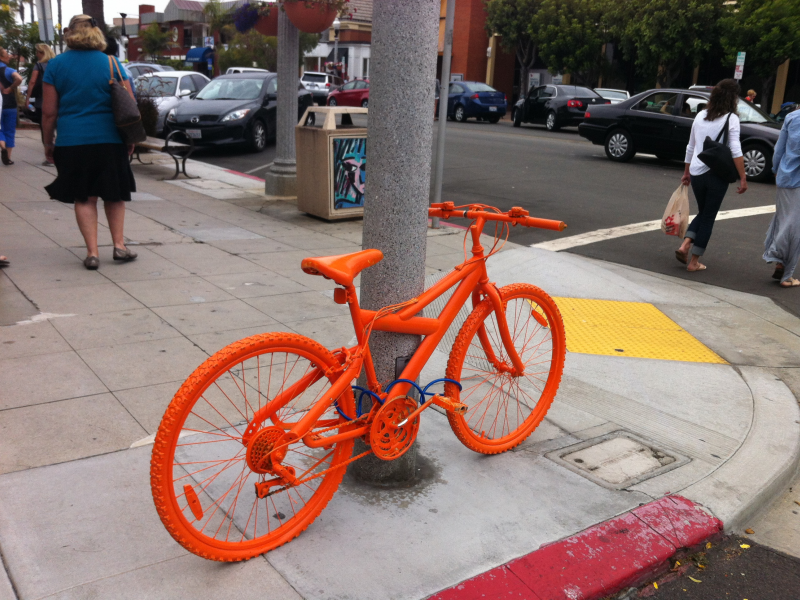
Photo from Patch.com
The fitness center painted a few bikes 100% orange and dispersed them around the town in which there was a new location opening - and did this per just about every new location around the US. Then, they bought ads for the associated keywords that people would google out of curiosity, such as “orange bicycle Orlando.” This presence marketing, paired with the instant brand recognition of Orangetheory’s bright orange logo, certainly boosted Orangetheory’s presence and announcement of the grand opening, but there was a flipside: one town in Canada was unamused. This town had a tradition of placing all-white “ghost bikes” around town to commemorate victims of fatal cycling accidents - quite the contrast in moods between the white and orange bikes. That’s why it’s imperative that you research the proper time and place for your strategy before just going for it.
Street Marketing: Boston Kung-Fu Tai Chi Club
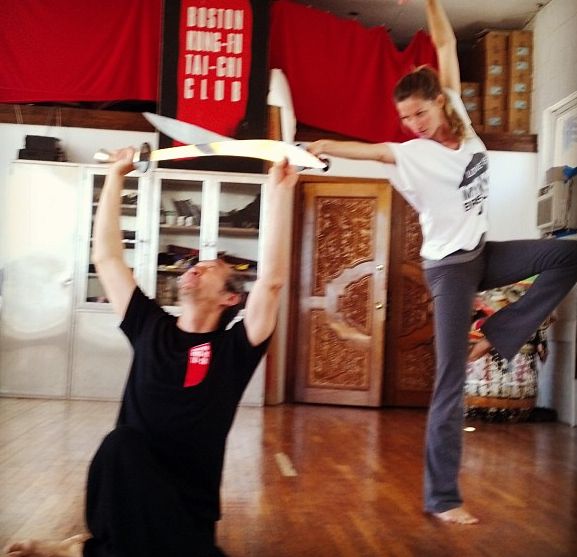
Pictured: Gisele Bundchen at Boston Kung-Fu Tai Chi Club
To save money on marketing, Boston Kung-Fu Tai Chi Club opted out of a newspaper ad and put a little twist on their promotion: they handed out flyers all over Boston promoting their self-defense classes for women. Boston is a busy city, and these classes could help women feel safer and more prepared if something were to happen crime-wise. This strategy also utilizes the benefits of street marketing, where brand ambassadors were ready to answer any questions that passers-by may have had to increase interest.
Ambush Marketing: Match.com
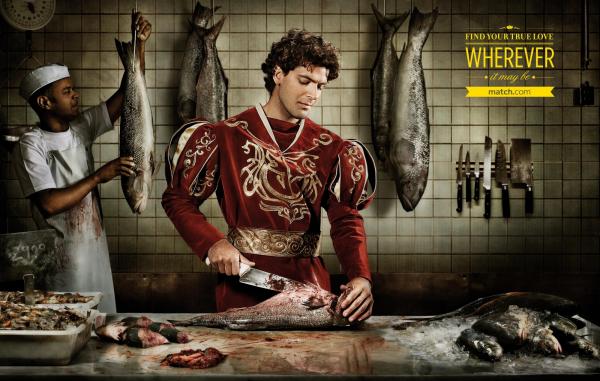
Similar Match.com themed ad
The online dating site took advantage of an ambush marketing strategy: they had a man dressed as a prince, complete with glass slipper, who walked around the Feria del Libro, or Book Fair in Madrid in search of his princess. He actually would try the shoe on people and turned many heads with his conspicuous costume and script, and a woman trailed him with Match.com bookmarks that had messaging about finding fairytale love online. They used the book fair publicity and theme to boost their brand in a clever and amusing way.
Stealth Marketing: Sony Ericsson

When the company released their newest camera phone (back in the pre-smartphone days, of course), they hired 60 actors in 10 different cities and had these people kindly ask strangers to take their photo for them. While the photo was being taken, the actors boasted all the great new features and benefits of the phone - and the public had no idea that these were paid actors due to how casual the whole setting was, but the idea was planted.
Buzz Marketing: Blair Witch Project
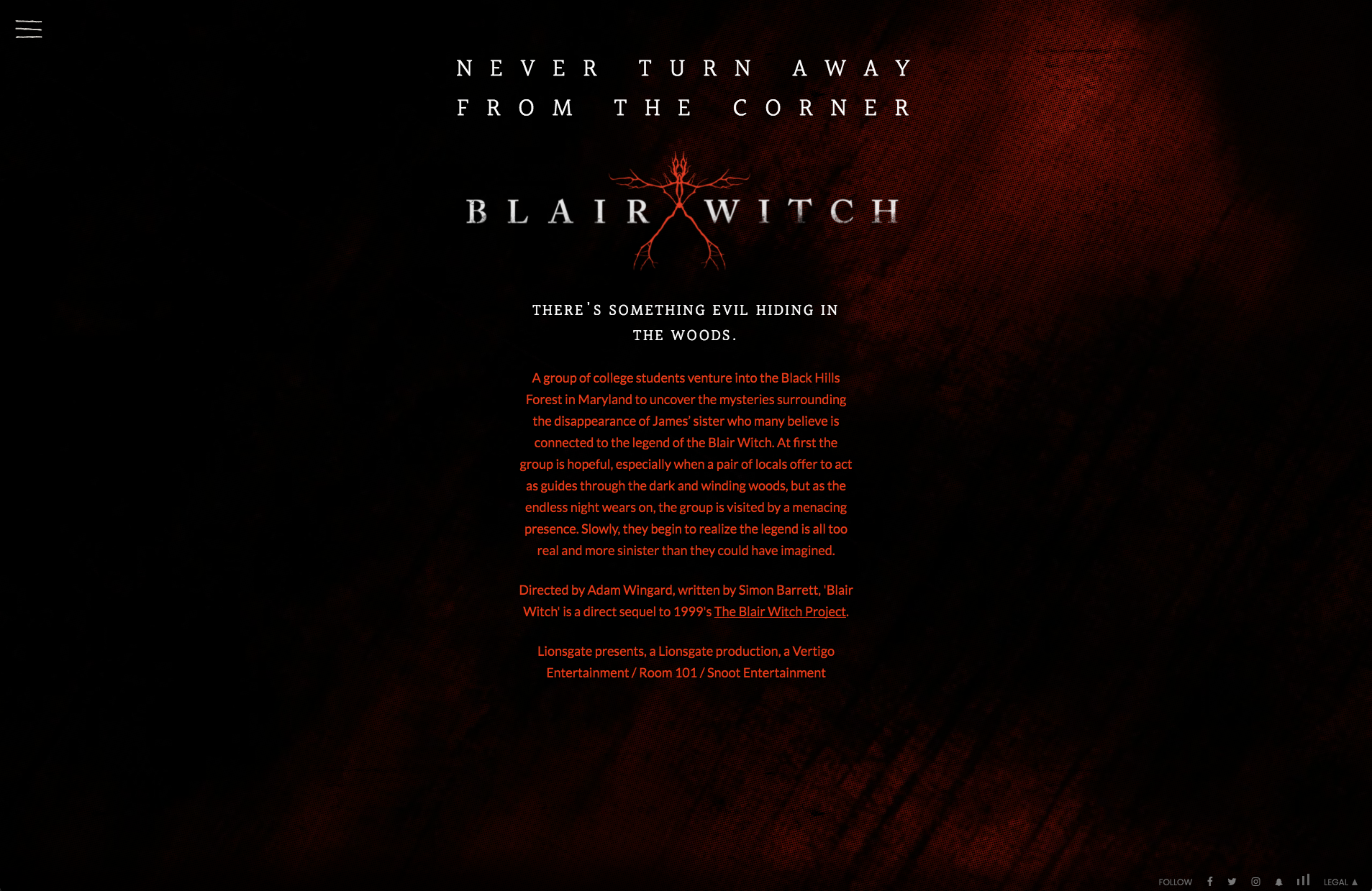
A film, created by five students fresh from film school, went from costing $50,000 in production to grossing $250,000,000 worldwide...but how? The clever students set up a website and spread news of the legend of the Blair Witch - and people bought it, literally. Because of the mystery and awe surrounding the legend and “true story” film, the news spread like wildfire, and the buzz led to a resounding success in the box office.
Guerrilla marketing, unlike guerrilla warfare, isn’t so scary once you get your head around it. So what strategy will you try first? Which are your favorites? We’d love to hear from you!




